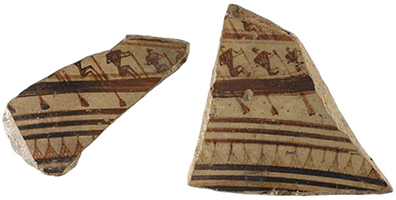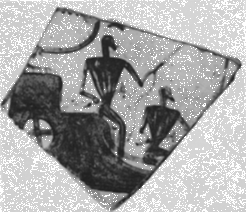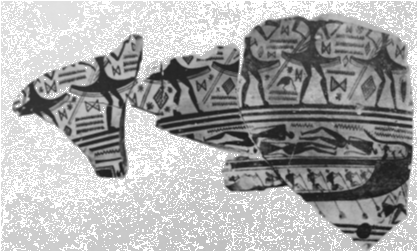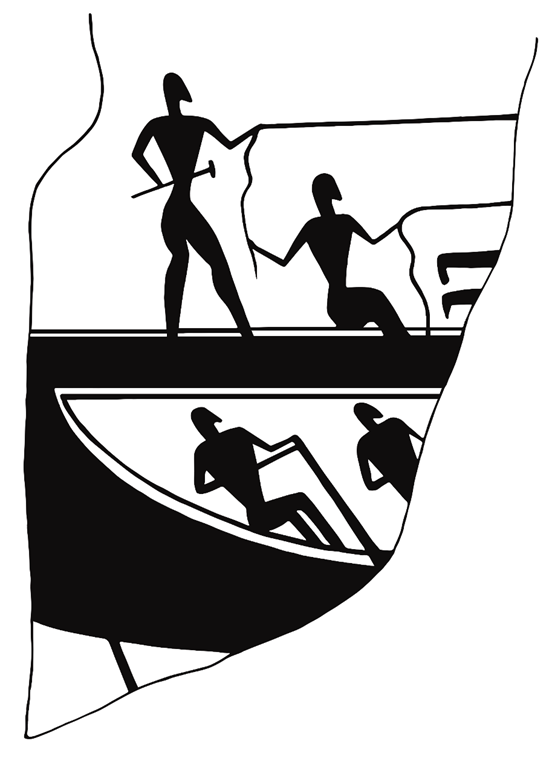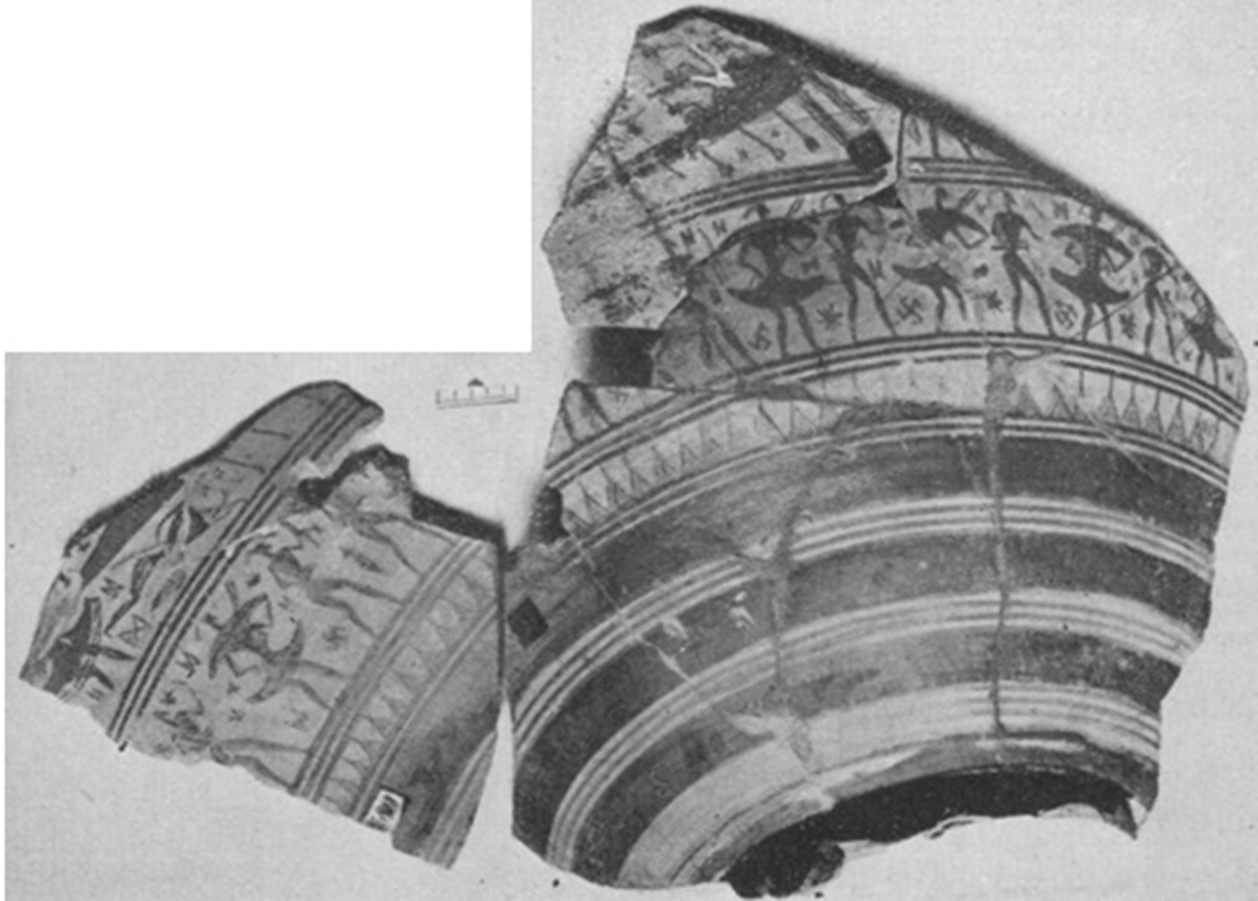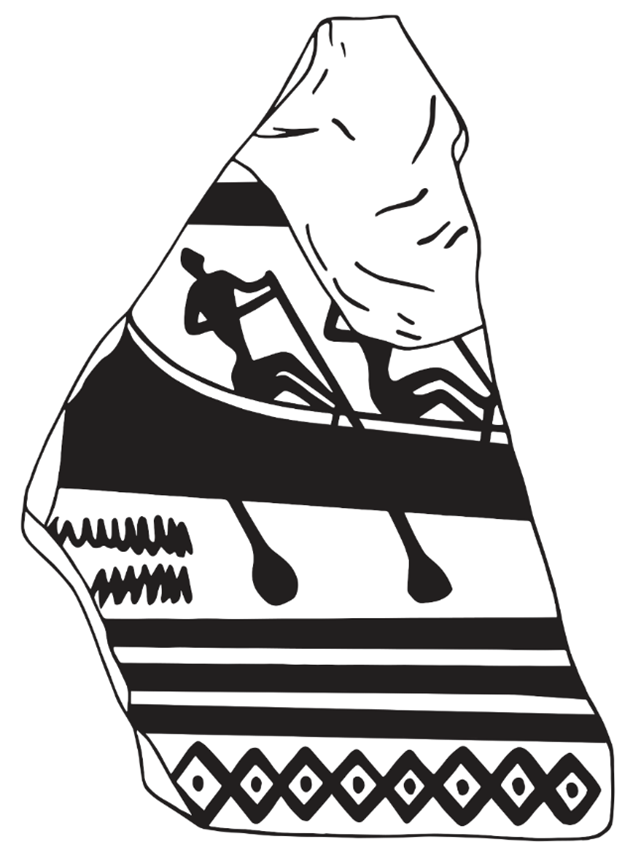A139a: tip of the bow projection and three oars. There is a corpse floating below with its head to the right.
A139b: Section of the hull near the bow, as indicated by the upward curve of lines A and B. All the horizontals of the standard Dipylon ship are depicted, but the verticals are omitted. On the lower level are preserved two rowers facing right and grasping their oars with both hands, their torsos inclined backwards - a position indicating they are at the end of their stroke. On the upper level the rowers are replaced by two figures, one standing and one sitting, both holding ropes, probably the forestays. The right figure is standing on the deck (line D) and holds the rope with his left hand. The left figure sits on line E, with its legs crossing it, and tugs at another rope with the left hand, while seemingly holding the end of the right figure's rope with the other. The feet of a corpse are visible in front of the sitting figure.
A139c: the stern part of the ship, as indicated by the upward curve of lines A and B. The lower level preserves three rowers and the upper level two, in the same position as those of fragment 1. The rowers on the deck level are painted on a larger scale. A diminutive helmsman of the size of the lower level rowers and equipped with a sword is shown holding one of the two steering oars with his left hand, while his right hand is raised.
A140: Krater fragment of a double-levelled ship to the left, with horizontals A, B, and D present. Section of the hull near the bow, as indicated by the upward curve of lines A and B. The two rowers face right, grasping their oars with both hands, their torsos inclined backwards - a position indicating they are at the end of their stroke. The oar-blades are shaped like spades. Directly below their feet is a small vertical joining lines A and B. The fragment is very similar to several other depictions attributed to the Kunze painter. The thin wales (lines C,E) framing line D however are absent. The close resemblance of the composition to these other examples and the fact that the absence of these wales is otherwise unattested for the Dipylon group makes the drawing suspect. The abrupt break in the hull at the edge of the fragment on the left is also suspicious. It is very likely that these are simply errors in the reconstructed drawing.


